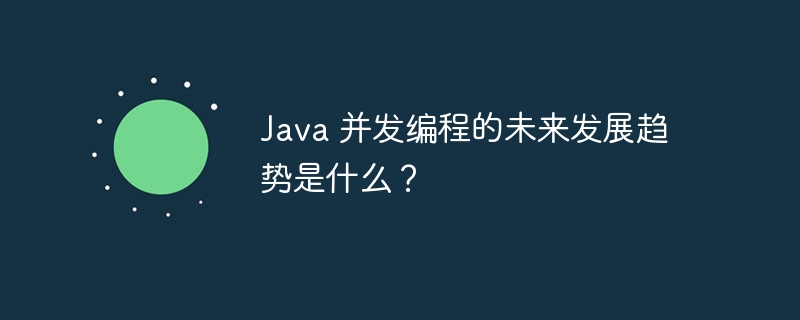
Future trends in Java concurrent programming include: Coroutines: lightweight threads to improve concurrency performance. Reactive programming: Centered on data flow, respond quickly to events. Lock-free data structure: synchronous lock-free, providing high concurrency and scalability. Concurrent GC: Efficient garbage collection in multi-threaded environments to improve performance. Lock-free programming: completely avoids locks and achieves extremely high concurrency, but requires complex algorithms.

The future development trend of concurrent programming in Java
As modern applications continue to increase their demand for concurrency and scalability , the field of Java concurrent programming is developing rapidly. This article explores the future of concurrent programming in Java and provides some practical examples to help you apply these trends in real-world projects.
Coroutines
Coroutines are lightweight threads that can suspend execution and resume later without the need for context switches. This can greatly improve concurrency performance while avoiding the overhead of traditional threads.
Case : Use a coroutine library (such as Quasar) to implement a non-blocking network server.
Reactive Programming
Reactive programming is a data flow-centric approach that emphasizes non-blocking and asynchronous operations. It allows applications to respond quickly to events and easily handle large numbers of concurrent requests.
Case: Use the RxJava library to implement a reactive data pipeline to process data streams from various sources in real time.
Lock-free data structure
Lock-free data structure is a concurrent data structure that does not use locks to synchronize. They can provide extremely high concurrency and scalability, especially when handling large numbers of concurrent reads and writes.
Case: Use ConcurrentHashMap to implement a lock-free hash table to process large amounts of data queries in parallel.
Concurrent GC
Concurrent garbage collection is a garbage collection algorithm that can efficiently collect garbage in a multi-threaded environment. It improves application performance and scalability by reducing the amount of time garbage collection is paused.
Case: Use the G1 garbage collector to implement concurrent GC to provide higher availability for highly concurrent applications.
Lock-free programming
Lock-free programming avoids locks entirely, thereby eliminating the overhead and race conditions associated with locks. It can achieve extremely high concurrency and scalability, but requires more complex algorithms and design patterns.
Case: Use atomic operations and lock-free data structures to implement lock-free parallel algorithms, such as parallel sorting.
Continuous Development
The field of Java concurrent programming is constantly evolving, and new technologies and best practices are still emerging. Staying current on the latest trends and technologies and applying them to your projects can help you develop highly concurrent and scalable Java applications.
The above is the detailed content of What is the future development trend of Java concurrent programming?. For more information, please follow other related articles on the PHP Chinese website!
